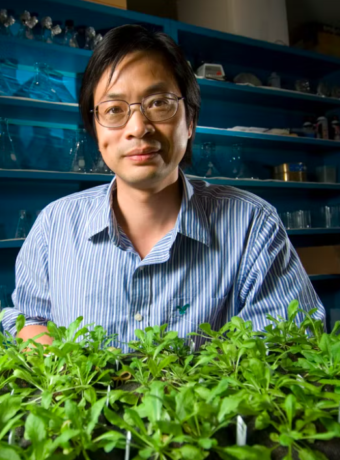This week’s ‘Global Food System Bite’ comes from Why mycoprotein looks set to take a chunk of the plant-based market.
The science of food has come a long way since the days of our ancestors. In the past, food was simply a means of survival, and the only consideration was whether or not it would provide enough calories to get through the day. However, as our understanding of nutrition has grown, we have come to realise that food is much more than just a source of energy. It can also be a powerful tool for promoting health and preventing disease. As a result, the study of food has become increasingly important from both a scientific and a practical perspective.
In recent years, we have seen a dramatic increase in the number of new foods and beverages being introduced to the market. This has been driven by advances in food technology, which have made it possible to create healthier and more delicious products than ever before. At the same time, consumer demand for new and innovative products has never been higher. As a result, we are currently in the midst of a food revolution, and it shows no signs of slowing down any time soon.
But it’s not just health that drives us to innovate in the food space; the growing focus on the plant-based sector is driven the need for more sustainable and ethical options to replace meat. One way that this has been achieved is through the use of texturised soy and wheat (gluten) proteins, which are extruded to create products that are similar in appearance and texture to meat. Although these products are a good start, the industry has found it difficult to please customers due to the inherent sensory properties of these proteins. For example, soy and wheat proteins often have an off-taste and distinct flavour that does not suit every product. In addition, the textures of these proteins can be hard to control, resulting in products that may not meet the expectations of the market. As such, the challenge for the industry is to find ways to overcome these obstacles and produce plant-based products that are both sustainable and delicious.

Subsequent developments have seen the rise of other plant protein sources, such as pea protein. Additionally, methods such as high-moisture extrusion (HME) have been developed to give more meat-like textures. Despite definite progress, the old challenges remain to some extent. The quest for better products, sources, and methods continues.
“While the plant sector has bloomed, another protein source has been brewing on the side; a search beyond plants and animals into the third kingdom of life: fungi.”
Mycoprotein is a type of protein that comes from fungi. While it has been around for centuries, it has only recently gained popularity as a protein source. Mycoprotein is a complete protein, meaning that it contains all of the essential amino acids that our bodies need. It is also low in saturated fat and high in fiber. In addition, mycoprotein is sustainable and environmentally friendly. Unlike other protein sources, it requires very little land and water to produce. For these reasons, mycoprotein is an excellent alternative to animal and plant-based proteins.

What is Mycoprotein
Mycoprotein is a type of protein that comes from fungi. It’s been around for decades, but it’s only recently begun to gain popularity as a food ingredient. For a while, mycoprotein was synonymous with one brand: Quorn, a UK-based company that produces meat substitutes made from fungi. The research behind Quorn started in the 1960s, when scientists began looking into the thousands of different fungi present in soils and other environments. After finding a species that could be turned into a nutritious food source, Quorn began producing products like burgers and chicken nuggets. Today, it is the most consumed vegetarian brand in the UK. Thanks to its popularity, Quorn’s products are now available in over 90 countries around the world. As the demand for meat alternatives continues to rise, Quorn’s products are likely to become even more popular in the years to come.
Mycoprotein refers literally to ‘protein from fungi’, as the etymology of the word ‘myco’ refers to the Greek work mýkēs, meaning ‘mushroom, fungus’. The term is somewhat misleading, however, as it implies a process of extracting and concentrating a protein from a fungal organism, as we do with plant proteins. In truth, there is no extraction process in mycoprotein production, and the word refers instead to the whole fungal organism, in technical terms the ‘mycelium’, which is as high in protein as most protein concentrates, with a protein content of 45-70 percent on dry matter.

You might consider eating fungi mycelia as something exotic, but it actually isn’t. Traditional examples of fungal mycelia in food include tempeh, a traditional Indonesian food where soybeans are fermented with fungi that create a mycelium structure around the beans, forming essentially a mycelium block. Other common foods are cheeses such as brie, where a white fungus grows on the outer layer of the cheese and creates a mycelium crust.
Mycoprotein is produced by growing the fungi in fermentation tanks with oxygen and nutrients until it forms a large mass of mycelium. The mycelium is then harvested , dried and milled into a flour which can be used in many different ways as an ingredient in both sweet and savory dishes. As it is so versatile, mycoprotein offers a delicious and nutritious way to add mushrooms to your diet without having to forage for them yourself!
Benefits of Mycoprotein in Ag-tech
The alternative protein sector is a rapidly growing industry as consumers become more conscious of the environmental impact of their food choices. The sector is pushed by three main boundaries: making products with great texture and taste that can compete with meat, delivering new food experiences to their customers, and doing both of these things in a price-competitive way. In order to improve taste in plant-based protein products, companies often need to mask flavour off-notes from these proteins and formulate against these effects. Additionally, the textures delivered by these proteins can perform in some applications but are not appropriate for others, such as fish and seafood applications. While some protein sources can deliver better results for the aforementioned criteria, they cannot do so in a price-competitive way or in the volumes needed. As the demand for alternative protein products grows, it will be interesting to see how the sector progresses in meeting these boundaries.

One way to overcome these challenges is to use mycoprotein, which deliver uniquely neutral taste profiles compared to plant-based proteins due to its cellular structure integrity. The textures obtained from different fungal mycelia and production techniques also cater to the variety of textures in demand within the food industry. In addition, since fungi are not plants, they do not require land or water for growth, making them a more sustainable option.
While there are still some hurdles to overcome, such as scaling up production and reducing costs, the potential of fungi offers an alternative route of protein production that is more efficient in terms of land and water usage, as well as emissions. With technology scaling and development, the costs associated with mycoprotein production will continue to decrease, making it more price competitive with the meat industry. In the long run, fermentation processes have the potential to impact global food systems by providing a sustainable source of protein.
While mycoprotein was first commercially produced by a single company, which limited its reach to a few geographies. However, in recent years, the number of companies producing and selling mycoprotein products has risen exponentially. This coincides with the expiring dates of most of Quorn’s patents around the technology of mycoprotein production, facilitating an expanded market with a variety of solutions and providers. According to projected production volumes by the emerging market players, mycoprotein presence could escalate more than five-fold in this decade, accounting for a considerable chunk of the whole plant-based protein market.
There is a lot of potential for the food industry to become more decentralized, sustainable, and robust. One area that has a lot of potential is the plant-based protein sector. There is a possibility for a variety of crops from different geographical locations to be used as inputs, the mycoprotein production process can be carried out by different manufacturers with facilities spread throughout the globe, and the resulting ingredient can be used by many different food brands for various products. This would create a much more decentralized, sustainable, and robust protein production system. It would also allow for a greater variety of proteins to be produced, which would be beneficial for both consumers and the environment.



